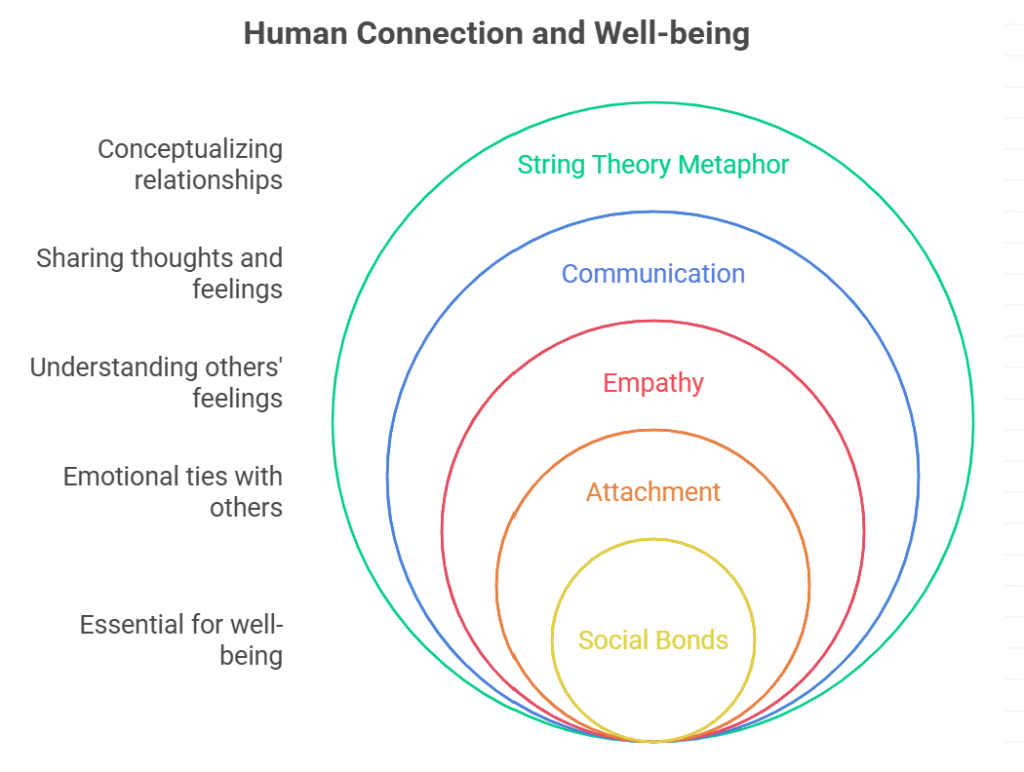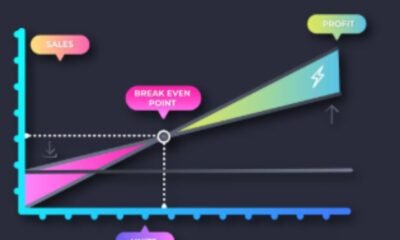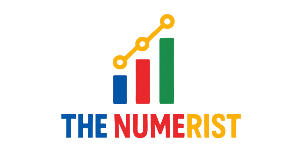BLOG
The Hidden Threads: Exploring String Theory Relationships in Modern Life

The Hidden Threads String theory, in physics, suggests that everything in the universe is made up of tiny, vibrating strings of energy. These strings interact in complex ways, creating the fabric of reality itself. Now, imagine applying this idea to relationships: what if every connection you have is like a vibrating string, subtly influencing your life’s symphony?
Why This Metaphor Resonates in 2025
With the rise of quantum thinking and holistic wellness, more people are seeking frameworks that blend science and self-awareness. String theory relationships offer a way to see connections as dynamic, evolving, and deeply intertwined. This perspective encourages empathy, curiosity, and a sense of wonder about the people in our lives.
How String Theory Relationships Work in Real Life
The Invisible Threads That Bind Us
Think about your closest friend. You might not see the “string” that connects you, but you feel its pull—through shared memories, inside jokes, or even the way you finish each other’s sentences. That’s the essence of string theory relationships: the idea that our bonds are real, even if they’re invisible.
Real-Life Example
A user recently tweeted:
“Sometimes I feel like my best friend and I are connected by some invisible string. No matter how far apart we are, we always end up on the same wavelength. #stringtheoryrelationships”
This sentiment captures the heart of the concept. It’s not about literal physics, but about recognizing the subtle, often unspoken ways we influence each other.
The Ripple Effect: How One String Affects the Whole
In string theory, a change in one string can ripple across the entire system. The same goes for relationships. When you’re stressed at work, that tension can affect your mood at home. When you support a friend through a tough time, you both grow stronger.
Understanding this ripple effect can help you become more mindful of your actions and their impact. It’s a reminder that every interaction matters, no matter how small.
The Science and Psychology of Connection
Why We Crave Connection
Humans are wired for connection. Studies in neuroscience and psychology show that social bonds are essential for our well-being. The string theory relationships metaphor taps into this need, offering a fresh way to think about attachment, empathy, and communication.

Your Cluster: The Network of Strings
In physics, strings don’t exist in isolation—they form clusters, networks, and even entire universes. In your life, your “cluster” might include family, friends, colleagues, and online communities. Each string in your cluster vibrates with its own energy, but together, they create the unique pattern of your life.
The Pros and Cons of Interconnectedness
Pros:
- Support: Strong strings provide emotional safety nets.
- Growth: Diverse connections expose you to new ideas.
- Resilience: A healthy cluster helps you bounce back from setbacks.
Cons:
- Overwhelm: Too many strings can lead to stress or burnout.
- Tension: Conflicting energies can cause friction.
- Dependency: Over-reliance on certain strings may limit personal growth.
Balancing your cluster is key. It’s about nurturing the strings that uplift you and gently loosening those that drain your energy.
Applying String Theory Relationships to Everyday Life
Building Stronger Connections
Want to strengthen your strings? Start with these tips:
- Be Present: Give your full attention during conversations.
- Communicate Openly: Share your thoughts and feelings honestly.
- Show Appreciation: Small gestures can reinforce positive vibrations.
- Set Boundaries: Protect your energy by managing toxic strings.
Navigating Conflict
Clashing strings are inevitable. The key is to recognize when a string is out of tune and take steps to restore harmony. This might mean having a difficult conversation, seeking compromise, or, in some cases, letting go.
Embracing Change
Strings can stretch, tangle, or even break. That’s part of life’s rhythm. Embracing change allows you to adapt and grow, both individually and within your cluster.
String Theory Relationships in the Digital Age
Virtual Strings: Online Connections
In 2025, many of our relationships exist online. Social media, remote work, and digital communities have created new types of strings—some strong, some fleeting. These virtual connections can be just as meaningful as in-person ones, but they require intentional effort to maintain.
Risks and Rewards
- Reward: Access to diverse perspectives and support networks.
- Risk: Superficial connections or digital burnout.
To make the most of your virtual strings, focus on quality over quantity. Engage deeply with a few meaningful connections rather than spreading yourself too thin.
The Future of Connection
As technology evolves, so do our relationships. AI, virtual reality, and even quantum computing are shaping the way we connect. String theory relationships offer a flexible framework for navigating these changes, reminding us that the essence of connection remains the same—no matter the medium.
Real-World Applications: From Therapy to Teamwork
String Theory Relationships in Counseling
Therapists are increasingly using the string theory metaphor to help clients visualize their support systems. By mapping out their cluster, clients can identify strong, weak, or missing strings and develop strategies for building healthier connections.
Team Dynamics and Leadership
In the workplace, understanding string theory relationships can improve team dynamics. Leaders who recognize the invisible strings between team members can foster collaboration, resolve conflicts, and boost morale.
FAQs
What does “string theory relationships” mean in psychology?
String theory relationships is a metaphor inspired by physics, used to describe the invisible connections between people. In psychology, it helps individuals visualize and understand the complex web of relationships that influence their emotions, behaviors, and well-being.
How can I strengthen my string theory relationships?
Focus on open communication, empathy, and mutual support. Regularly check in with your cluster, express appreciation, and address conflicts early. Setting healthy boundaries is also crucial for maintaining strong, positive strings.
Are string theory relationships real or just a metaphor?
While the concept is inspired by real physics, string theory relationships are a metaphor. They provide a creative way to think about human connection, but they’re not scientifically proven in the context of relationships.
Can string theory relationships help with loneliness?
Yes, by visualizing your cluster and identifying which strings need attention, you can take proactive steps to build new connections or strengthen existing ones. This approach encourages mindfulness and intentionality in your social life.
Final Thoughts
In a world that’s more connected—and more complex—than ever, the idea of string theory relationships offers a fresh lens for understanding ourselves and each other. It’s a reminder that every interaction, no matter how small, sends ripples through our personal universe.
BLOG
Besos Meaning: A Journey into the Heart of Latin American Culture

Besos is derived from the Spanish language, where it translates to “kisses.” However, the meaning of besos goes beyond a simple translation. It’s a term that encompasses a range of emotions, from affection and love to passion and intimacy.
The Cultural Significance of Besos
In many Latin American cultures, besos are an integral part of daily life. They’re a way to show affection, greet one another, and express love. The cultural significance of besos is deeply rooted in the values of warmth, hospitality, and closeness.

The Different Types of Besos
While the term “besos” is often associated with romantic love, it’s not the only context in which it’s used. Besos can be exchanged between family members, friends, and even as a greeting or farewell.
- A beso on the cheek is a common greeting in many Latin American countries.
- A beso on the lips is often reserved for romantic partners or loved ones.
- A beso on the forehead or hand can be a sign of respect, affection, or blessing.
“I remember my abuela giving me besos on the forehead every night before bed. It was a special moment that made me feel loved and safe.”
The Emotional Significance of Besos
Besos are more than just a physical gesture; they’re a way to convey emotions and connect with others. The act of giving or receiving a beso can evoke feelings of comfort, security, and love.
FAQs
Q: What is the meaning of besos in Spanish?
A: Besos is the Spanish word for “kisses.” It’s a term used to describe a range of affectionate gestures, from romantic kisses to friendly pecks on the cheek.
Q: How do you use besos in a sentence?
A: You can use besos in a sentence to express affection or love, such as “Dale besos a tu familia de mi parte” (Give your family a kiss from me).
Q: What is the cultural significance of besos in Latin America?
A: Besos play a significant role in Latin American culture, where they’re used to show affection, greet one another, and express love.
Q: Can besos be used in non-romantic contexts?
A: Yes, besos can be used in non-romantic contexts, such as between family members or friends. It’s a way to show affection and closeness.
Conclusion
Besos, we discover that it’s more than just a word – it’s a way to connect with others and express our emotions. Whether you’re looking to deepen your understanding of Latin American culture or simply want to show affection to those around you, besos is a term that’s worth exploring further.
BLOG
Luxury Cruise Passengers: Staying Safe on the High Seas

Luxury cruises often traverse through exotic waters, some of which are notorious for piracy. The Gulf of Aden, the Indian Ocean, and parts of Southeast Asia are known hotspots where pirates have been active. These areas are often near popular cruise routes, putting luxury cruise passengers at risk.
Piracy Tactics: How Pirates Target Luxury Cruises
Pirates have become increasingly sophisticated, using tactics like GPS spoofing and fake ship identities to target unsuspecting vessels. They often look for easy prey, such as slow-moving ships or those with lax security. Luxury cruises, with their high-value passengers and cargo, can be attractive targets.
The Human Impact: Stories from Luxury Cruise Passengers
“I was on a luxury cruise in the Gulf of Aden when we received a piracy warning. The crew immediately took action, increasing security measures and altering our course. It was a harrowing experience, but thanks to their quick response, we were safe.” The fear and uncertainty that come with a piracy warning can be unsettling, but being prepared and knowing what to expect can make all the difference.
Staying Safe: Precautions and Measures for Luxury Cruise Passengers
To minimize the risk of piracy, luxury cruise lines have implemented various security measures. These include:
- Traveling in convoys or with naval escorts
- Implementing advanced security systems, such as radar and surveillance cameras
- Conducting regular security drills and training for crew members
- Increasing security personnel on board

What Luxury Cruise Passengers Can Do
While cruise lines take necessary precautions, passengers can also play a role in staying safe. Being aware of the risks and taking simple precautions, such as staying informed about piracy hotspots and following crew instructions, can help minimize the risk of piracy.
Piracy Warning Systems: How Luxury Cruises Stay Ahead
Luxury cruise lines use advanced piracy warning systems to stay informed about potential threats. These systems provide real-time updates on piracy hotspots and suspicious activity, enabling crews to take proactive measures to avoid danger.
The Role of Technology in Piracy Prevention
Technology plays a vital role in preventing piracy. Advanced systems, such as satellite tracking and AI-powered surveillance, help cruise lines stay one step ahead of pirates. These technologies enable crews to respond quickly and effectively in the event of a piracy warning.
FAQs
Q: What should I do if I receive a piracy warning on my luxury cruise?
A: If you receive a piracy warning, follow the instructions of your crew immediately. They are trained to handle such situations and will take necessary precautions to ensure your safety.
Q: Are luxury cruises more vulnerable to piracy than other types of cruises?
A: Luxury cruises can be attractive targets for pirates due to their high-value passengers and cargo. However, luxury cruise lines often have advanced security measures in place to minimize the risk.
Q: How can I stay informed about piracy hotspots and safety measures on my luxury cruise?
A: Your cruise line will provide you with information about piracy hotspots and safety measures in place. You can also stay informed through government travel advisories and industry reports.
Q: Can I travel safely on a luxury cruise despite the risk of piracy?
A: Yes, with the right precautions and awareness, you can travel safely on a luxury cruise. Cruise lines take piracy seriously and have measures in place to protect passengers.
Conclusion
Luxury cruise, staying informed about piracy risks and taking necessary precautions can help ensure a safe and enjoyable journey. By understanding the risks and being aware of the measures in place to prevent piracy, you can relax and enjoy your time on board.
BLOG
Mandarin for Mandarin: Tips and Tricks for Language Learners

Mandarin can be a rewarding and enriching experience, especially when you focus on learning Mandarin for Mandarin. By doing so, you can:
- Improve your pronunciation and intonation
- Develop a deeper understanding of Chinese culture and history
- Enhance your career opportunities in China or with Chinese companies
Immersing Yourself in the Language
One of the most effective ways to learn Mandarin for Mandarin is to immerse yourself in the language. This can be done by:
- Watching Chinese movies and TV shows
- Listening to Chinese music and podcasts
- Speaking with native Mandarin speakers
For example, “I started watching Chinese dramas with English subtitles and it really helped me improve my listening skills and get used to the natural flow of the language.”

Tips for Learning Mandarin for Mandarin
When it comes to learning Mandarin for Mandarin, there are several tips to keep in mind:
- Focus on tones and pronunciation
- Practice speaking and listening regularly
- Use language learning apps and resources
Using Language Learning Apps
There are many language learning apps available that can help you learn Mandarin for Mandarin. Some popular options include:
- Duolingo
- HelloTalk
- Pleco
FAQs
Q: What is the best way to learn Mandarin for Mandarin?
A: The best way to learn Mandarin for Mandarin is to immerse yourself in the language by watching Chinese media, speaking with native speakers, and practicing regularly.
Q: How can I improve my Mandarin pronunciation?
A: You can improve your Mandarin pronunciation by listening to native speakers, practicing speaking regularly, and using language learning apps that focus on pronunciation.
Q: What are some common challenges when learning Mandarin for Mandarin?
A: Some common challenges include mastering tones, understanding grammar and syntax, and finding opportunities to practice speaking and listening.
Q: Can I learn Mandarin for Mandarin on my own?
A: Yes, you can learn Mandarin for Mandarin on your own with the right resources and motivation. However, it’s also helpful to work with a language exchange partner or tutor to get feedback and support.
Conclusion
Mandarin for Mandarin requires dedication, persistence, and the right resources. By immersing yourself in the language, practicing regularly, and using the right language learning tools, you can achieve fluency and unlock new opportunities. Whether you’re a beginner or advanced learner, there’s always room to improve and refine your Mandarin skills.
-

 TECH6 months ago
TECH6 months agoApple iPhone 17: Official 2025 Release Date Revealed
-

 BLOG6 months ago
BLOG6 months agoUnderstanding the ∴ Symbol in Math
-

 EDUCATION6 months ago
EDUCATION6 months agoHorizontal Translation: How to Shift Graphs
-

 EDUCATION6 months ago
EDUCATION6 months agoUsing the Quadratic Formula
-

 EDUCATION6 months ago
EDUCATION6 months agoThe Meaning of an Open Circle in Math Explained
-

 HEALTH6 months ago
HEALTH6 months agoGoodNever: Wellness, Simplified
-

 EDUCATION6 months ago
EDUCATION6 months agoWhy Does m Represent Slope?
-

 EDUCATION6 months ago
EDUCATION6 months agoHow to Solve Quadratic Equations 2
